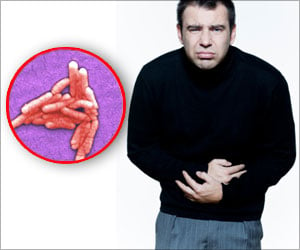Some of the findings are presented in the annual report on the occurrence of diseases that can be transmitted to humans from animal and food.

In 2012, 1,198 Danes were registered with a Salmonella infection, which corresponds to 21 cases per 100,000 citizens. It is a little more than the record-low incidence in 2011. Nearly half (45 percent) of all Salmonella infections were contracted while travelling abroad. It is particularly in connection with travels to Egypt, Thailand and Turkey that Danes become infected. Approximately half of the travel-related cases originated from these three countries.
The most common type of Salmonella in Danes was Salmonella typhimurium which caused 415 cases in 2012. Salmonella enteritidis caused 242 cases, which was the lowest number since the action plans for combating Salmonella were introduced in the 1990s. Historically, this Salmonella type has been related to eggs, but today the majority of S. enteritidis cases, 77 percent, are contracted while travelling outside of Denmark.
Danish pork and beef are the main sources
In 2012, 11 foodborne outbreaks due to Salmonella were recorded. Two outbreaks originated from Danish beef, one from Danish pork and one from imported duck. In the remaining seven outbreaks, the food source was unknown. An outbreak is defined by two or more persons falling ill from the same food source.
The annual Salmonella source account estimated Danish pork as the most important source of human salmonellosis cases (8 percent) in 2012, which was similar to 2011. Imported pork accounted for 0.2 percent of the cases in 2012. This was a large reduction compared with the two previous years where just over 5 percent of the cases were due to imported pork. Danish beef was estimated as the second-largest food source of Salmonella cases (7 percent) in 2012. This is a very large increase compared to the last 10 years where 0.5 to 1.5 percent of the cases were due to Danish beef.
No Salmonella cases from Danish chicken
"During the past 20 years, Denmark has focused intensely on reducing Salmonella on the farms as well as at the slaughterhouses. We are pleased to see that the efforts have ensured that Danes no longer contract Salmonella from eating Danish broiler meat. The EU also has focus on Salmonella and has set targets for the level of Salmonella in broiler flocks and egg-laying flocks", says Anne Wingstrand, Senior Researcher at the National Food Institute.
Approximately 25 percent of all Salmonella cases in Denmark could not be attributed to a specific food source. The reason may be that the cases were caused by foods which were not included in the Salmonella source account, e.g. fruit and vegetables, or other sources of infection such as contact with livestock and pets.
Source-Eurekalert
 MEDINDIA
MEDINDIA




 Email
Email






